Monday, June 25, 2007
INSIDE THE BAHAY TSINOY


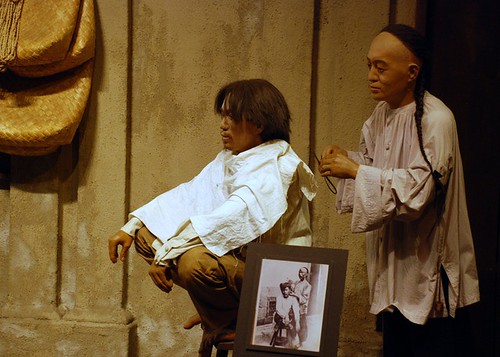
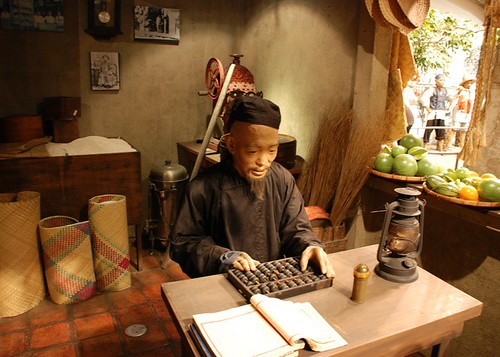

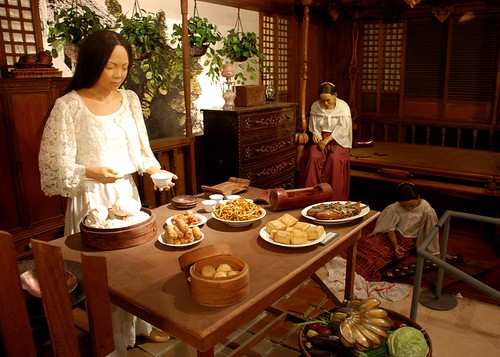

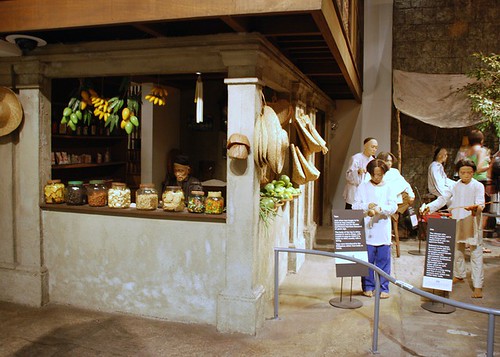
Many Filipinos may not realize -- as evidenced by the rare coins, tradewares, and other unearthed artifacts -- there were extensive contacts between the Chinese and Filipinos long before the arrival of the Spaniards.
Early records also indicate the active trading between the Chinese and our northern and southern islanders by the late 10th century in which bartering was the medium of their transactions. There were also archived journals about certain Filipinos visiting China; foremost of which was the one made by the Sultan of Sulu Paduka Batara. The Sultan went to Beijing to pay tribute to the Imperial Court of Emperor Yung Lo in 1417, but died on his way back home.
From these longtime trading relations, the Chinese subsequently began to immigrate to the archipelago in large numbers to escape a harsh life back home in China. However, what they experienced in the archipelago was an even harsher life full of hard working conditions. It was the Galleon Trade -- which linked the junk trading system from China to Acapulco (and to the rest of Europe for 250 years) -- that firmly planted the Chinese immigrants on the Philippine soil, as well as continue to attract more Chinese into the archipelago.
Sangley, the term used by the Spaniards for the Chinese, comes from the word siong-tay, literally "often comes" in Hokkien. The Sangleys came as merchants, laborers, and artisans; becoming the integral backbone of the Spanish colonial economy in no time. But because of their growing population, which outnumbered the Spanish presence, the local authorities grew fearful and distrustful of them; resulting to persecution and harassment including large-scale massacres of the Chinese.
The Spanish authorities separated them in quarters called parian. Due to massacres or fires, the Spaniards changed the location of the parians nine times. In 1790, when the last parian was destroyed, the Chinese were allowed to join the baptized Chinese in Binondo and Santa Cruz. In fact, it was the Chinese craftsmen and artisans that brought affluence to the Jesuit-controlled parian of Santa Cruz in Manila much to the astonishment of the Dominicans.
At the end of the 19th century, with life becoming even more difficult for the Chinese settlers because of continued Spanish harassment, the Chinese started to form institutions for self-protection. They also built their first school, hospital and cemetery. The first business institution, the Chinese Chamber of Commerce was also formed, and pioneer businesses like China Bank, Destileria Limtuaco, Yutivo and Ma Mon Luk started to appear.
Bahay Tsinoy takes its visitors through the saga of the Chinese Filipinos as their identities in the archipelago transform and evolve from merchant seamen, to immigrant laborers, to mestizos, to ilustrados, to revolutionists and to Tsinoys which continue to help build our nation.
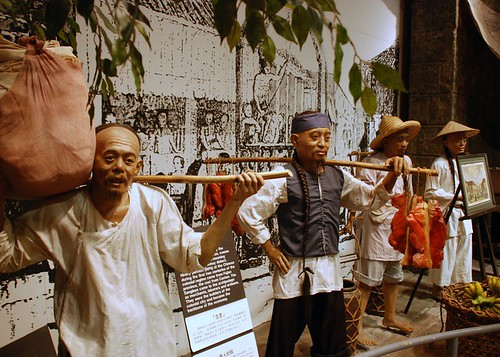
Kaisa-Angelo King Heritage Center
Anda Corner Cabildo Streets, Intramuros, Manila
Telephone: 526-6798 and 527-6083
Admission: 100 pesos for adults; 60.00 pesos for students
You may also want to check out my previous posts about the Chinese influence in the Philippine Archipelago:
Banking and the Early Chinese Traders
Ysla de Binondo and the Chinese Revolt
Don Carlos Palanca Tan Quien-Sen
Herb for the Nerve
The Chinese Cemetery
.
posted by Señor Enrique at 6:55 AM
![]()
![]()

27 Comments:
- said...
i went to this museum this year and i was so impressed with all their collections. i've been planning on taking my sister and cousin to this place. hopefully will soon. thanks for visiting my blog too.
biyahengpinoy
ps. thanks for your kinds words on my sagada photos. have you seen the video that i've made. you can check it. :)- Wil said...
What an interesting museum -- a wax museum of sorts. I wonder if Henry Sy, the megamall mogul, will be added to that museum one day. :D
- said...
I enjoyed this historical recounting especially to a group of people---the chinese settlers for that matter---whose history have not been so well discussed in schools and other public fora.
I have seen very old pictures of how the tribespeople here in our place have had contacts with the chinese traders from afar, displaying quaint jars and porcelains as they posed. It was known that the chinese traders came here to seek gold which were so abundant here and mined by the tribespeople here centuries ago.- said...
Hi, Eric! :)
Wow, ang ganda pala sa loob ng Bahay Tsinoy! I really must see it one of these days!- Señor Enrique said...
Brought two of my cousins' kids yesterday with me and they really enjoyed it, ByahengPinoy. They now have a better sense of the great influence of the Chinese in our nation.
Yes, those pictures of yours taken in Sagada are quite something. Maybe omeday I'll get to visit that place, too!- Señor Enrique said...
I wouldn't be surprised, Wil, if Henry Sy makes it to the museum's hall of fame. But I'm sure he makes a generous contribution for the funding of this organization, which we need to help safeguard our heritage and culture.
- Señor Enrique said...
I'm sure they've come for our pearls also, Major Tom.
Nonetheless, these early interactions between the Chinese and our ancestors were such fascinating aspects of our culture and history that I'm puzzled as to why they are not properly explored and discussed in our schools' history classes.- Señor Enrique said...
You may want to suggest to the old school where you taught, Rhoda, to organize a day trip to this museum. I bet its students will truly appreciate such outing :)
Incidentally, to help defray its operating costs, the museum also rents out some of its facilities for wedding reception and other corporate events. Yesterday, they had the lobby beautifully set up for an evening wedding reception.
Bahay Tsinoy also has a great library. I will make use of it for my future entry research on Filipinana matters.- said...
How do they construct those statues?
I'm amazed by looking at those photos you've posted up and thanks for sharing bits and pieces about the Bahay Tsinoy!
(:
Just one thing; how wide's the usage of Hokkien or Chinese dialects over there in Pinas?- Señor Enrique said...
Hokkien and Mandarin are spoken by most Tsinoys, Kyels. These languages are very much alive here in The Philippines.
These figures were modeled after vintage photographs of actual Chinese residents of Manila. The construction of which were headed supposedly by a professor from de la Salle College.
Thanks, Kyels!- said...
Haven't been to this museum but it certainly highlights the history of Chinese immigration and integration in Manila. Kudos to the folks that funded and maintained this museum :)
- Gita Asuncion said...
hello senorE! thanks for posting this. my father in law would surely enjoy this museum. we will definitely take him there one of these days...
taking pictures is okay inside???- Gita Asuncion said...
i forgot to ask, senorE, is the museum open on sundays? and until when will the exhibit run?
- Señor Enrique said...
It is indeed an impressive center, BW -- highly educational; a must to visit by all our high school students, I must suggest.
Again, instead of leisure parks and TV game shows, I think our school administrators will do a much better service to our youths by organizing field trips for them to visit such museums as Bahay Tsinoy.- Señor Enrique said...
This are permanent exhibits, Gita. There are more to see there besides these incredible figures.
Yes, it's open on Sundays from 1pm until 5pm. I had to ask in advance if I could take some photographs. I also had to state my intention, which is to help promote the museum to the general public through my blog. Like all museums, they certainly do not allow flash units to be used because of the eventual bleaching effect.- said...
hmmmm, makes me think the connection on why the Sangley Point Naval Base in Cavite city a former american base named that way.... :)
- said...
this will definitely be in our itinerary, am sure my kids will appreciate it. thanks for sharing the wonderful photos.
- Señor Enrique said...
I'm glad you brought up Sangley Naval Base, Lino. It once crossed my mind also but never followed up on it. I shall ask Ivan Mandy for his thoughts on this.
Thanks, Lino :)- Señor Enrique said...
Hi Dine,
I have a feeling that your family will enjoy visiting Bahay Tsinoy. It is really a very educational museum.
By the way, Global Voices picked up my initial entry on Bahay Tsinoy:
http://www.globalvoicesonline.org/2007/06/10/philippines-must-visit-museum/#comment-1186479- reyd said...
This is really the best way for everyone to learn the contributions of the early Chinese immigrants on our Islands.
I just hope that some hatred by some Pinoys on Chinese-Filipinos would diminished. After all, some are more Filipinos than some of them. :)
I always remind some that the Fil-Chi(Tsinoys) now are far different than the Taiwanese and the Chinese mainlanders doing business in Manila right now.
Thanks again for a wonderful Photo-journal.- Señor Enrique said...
I agree with you, Reyd. Bahay Tsinoy is an outstanding center to learn more about the immense influence and contributions of the Chinese in the Philippines.
I wish that all our school administrators will include this museum on their list of field trip iteneraries for their students to visit and enjoy :)- said...
Again, another interesting pace in Manila that I should visit one of these days. Ang galing ng exhibit. And buti they allow you to take photos.
- Señor Enrique said...
Yes, Ferdz ... you have got to visit this museum!
I had to advise them that my intention is to help promote the museum through my blog. Hopefully, by seeing what's in store for them, though only a part of the overall exhibitions, the general public may be enticed to visit the museum in person.- sheilamarie said...
oh wow! eric, from the pics you took, the place looks very interesting talaga! will definitely visit it during our next vacation as we always go to intramuros to make "pasyal"
- Señor Enrique said...
And make sure you tell us how Lucho reacts to these figures ... hehehe.
- geejay said...
dear senor enrique,
May we use your photos of bahay tsinoy, maybe 2 or 3 of them, for our 33rd issue of www.oovrag.com (Our Own Voice: Filipinos in the Diaspora). This 33rd issue, which will come out in December, will focus on Tsinoys.
In exchange, we will put a link to your website on an "About the Photographer" page where these photos will be used.
If this is ok with you, then it is too much to ask for high-resolution versions of these photos?
Geejay Arriola
creative director
Our Own Voice- Señor Enrique said...
Hi Geejay,
Sure, you may use my photos.
Good luck with your 33rd issue!




